Wildlife activist, Lynda Staker, recently communicated to me some amazing case-work on combatting the effects of snake bite in a variety of wild and domestic animals, using injectable Vitamin C. Candobetter welcomes further comment and discussion in this controversial treatment in an important field. In fairness to this subject, we also supply other explanations for the effects observed, citing a veterinarian, and a contrary account from goat-herders.

"We have managed to save three animals from snake bite over the last 6 months. One was a Bennett's wallaby, who after a week of intensive care, recovered completely, the next was a pet cat and the third just recently was a Black-striped wallaby. The first two animals were verified as snake bite victims, this last one has been diagnosed clinically.
"The most fantastic aspect to this is that it was injectable Vitamin C that saved them! The vet was so impressed after the recovery of the Bennett's wallaby, that he used Vitamin C on the cat, whose owners bought him in after being bitten by a snake. He is now in no doubt how successful injectable vitamin C really is.
"This makes me so happy, since not only are we saving our beloved animals from what is normally a fatal outcome, but we are slowly getting through to vets that Vitamin C really does work, (as long as the animal is discovered soon after being bitten, that is) and look at the lives and money we can save to boot!
"Carers who worry about venomous snakes, need to have a bottle of injectable Vitamin C on hand. It feels so good to save our precious animals.
"We deal with so much heartache and misery, regarding our beloved kangaroos being treated as non living, feeling beings, and being slaughtered for man's money hungry needs; I just have to share some wonderful news, and lighten our heavy hearts."
In response to my asking Lynda if Vitamin C has been shown to work in any human cases, she responds:
"I have no idea whether it works on humans and doubt anyone would get the chance to find out, since the medical profession would be on our backs, but I tell you this, if I were in the bush and was bitten, I wouldn't hesitate in injecting myself with about 20 ml of injectable vitamin C. I personally feel it would work in all animals, since it seems to neutralize the venom.
"I have had great success with it for the last 10 years. It works for all types of bites whether insect or snakes and also ingested toxins such as Azalea poisoning in macropods. I was poo pooed when I first began advising carers to use it, but now I feel I am being proved correct.

"Of course there will always be skepticism where a less chemically enhanced treatment is used, most especially when is not accepted by academics, nor scientifically proven to have benefits. The positive thing about using Vitamin C is that it is a water soluble Vitamin and what is not utilized by the body, is excreted, whereas Vitamin D is an oil based Vitamin and definitely has the risk of contraindications when used indiscriminately.
"I have been involved with quite a few successful outcomes of treating snake bitten macropods (and dogs and one cat, which was also treated by a veterinarian, and saved by using only Vitamin C ) now and can honestly say, it had to be the Vit C, since there was nothing else we used to treat the animals, other than of course Diazepam (sedation agent) which is crucial in the initial stages, plus the process of reducing the animal's high temperature."
Why Vitamin C doesn't Work Sometimes
"Of course there are those we have lost too, which we believe is because the animal wasn't discovered soon enough to be able to treat it. It is a very difficult thing to prove, since the majority of cases are too far from vets and we have to go with what the carer has on hand, and I always advise carers to have a bottle of Vit C on hand, just for these types of situations. We have also used it for other bites, allergies and also ingested toxins such as Azalea poisoning, with success. I have covered many case studies of other carers in my current macropod husbandry manual*."
Why Vitamin C works?
"Since I really don't know why Vit C works in so many toxic and venomous situations, I can only assume it acts as a neutralizer. I have come up with very high dose rates to treat these cases, and also the continuation of 12 hourly injections, to prevent relapses of the symptoms is very important. Without dedicated follow-up the animal may eventually pass away.
"Dr. Lee Grant, the veterinarian who treated a Bennett's wallaby in Tasmania, has kindly written this summary below for my new manual, which I am currently working on. Also below that, is the case study by the carers who continued treatment during the wallaby's recovery."
Veterinarian Report on Vitamin C
I am a veterinarian practicing small animal medicine at the Forbes Street Veterinary Clinic in Devonport, Tasmania, Australia. Following are details regarding a snake bite incident with a Red Necked Wallaby, (Macropus rufogriseus), also known as a Bennett's Wallaby, that is currently in their care. The wallaby is called "Poppit", and he is a 4.2 kg male.
On January 28, 2010 was bitten by a Tasmanian Tiger Snake (Notechis scutatus). He presented in a moribund state with a heart rate of 200 bpm, a respiratory rate of 50, and a temperature of 40 degrees Celsius. Ideally snake bite envenomizations are treated with the appropriate anti venom, but this is very expensive. However the Doyle's had information from an individual well acquainted in macropod care giving, where Vitamin C, diazepam, and Vitamin E-Selenium could be used as a treatment.
Pamlin injectable, (Diazepam 5mg/ml) was given at a dose of 1 mg/kg IV slowly (5 mg or 1 ml was given once). This was followed shortly with a Vitamin C injection (Troy Vitamin C injectable 500 mg/ml Ascorbic Acid as Sodium Ascorbate). 10 ml of this injectable was administered IM in 4 separate areas in the left hind leg musculature.(A dose rate of 2000 mg Vitamin C could be used for up to 2 kg BW every 24 hours according to the information provided to me). Within 10 minutes the patient was visibly more relaxed and the breathing rate had improved. The heart rate had dropped to 180 bpm. Over the next 30 minutes the heart rate was down to 140 bpm, the respiratory rate was 25-30 per min, and the temperature was at 37.3 degrees Celsius. I placed a 22 G IV catheter into the tail vein for possible repeat valium injections if required by the caregivers. The patient was sent home.
The next day Poppit was doing very well and almost 100 % recovered, except for a minor neuro-muscular issue with the left hind foot, which was present at the time of arrival at the clinic before the injections. This was likely related to the site where he was bitten. He was given another 10 cc of Vitamin C in the opposite leg in 4 spots. The caregivers would continue this once a day for the next 6 days. He was also given Vitamin E-Selenium at 0.02ml/kg (0.09 ml) IM, once by the caregivers later that day, with a possible repeat in 4 days. Overall he made a quick and uneventful recovery. He is due to be released later this year
Obviously this proved to be a very interesting treatment method for snake envenomization. I hope you find this information useful.
Sincerely,
Lee Grant D.V.M.
CASE STUDY: Pam and Pete Doyle-marsupial carers-Tasmania
Nursing an animal with snake bite is not for the faint-hearted. It’s not a matter of injecting the necessaries and putting the animal back to bed until the next dose or feed. It’s a matter of diligence, observation and acting on common sense and duty of care with your charge. We don’t expect humans in critical care situation to be given medication and left alone until the next dose, we expect them to be cared for totally and that’s what is to happen should you expect a chance of a full recovery from a snake bite.

Poppit is a Bennetts (Red-necked) Wallaby, orphaned aged five and three quarter months old and weighing 590 grams when he came into care. He was being fed Wombaroo milk.
28/1/10 – Poppit was nine and a half months old and outside full time. He had his afternoon bottle at 4.00 pm and it was between this time and 7.45 pm that he must have been bitten.
First day:
7.45 pm: When found he was hunched, ears were burning hot and his body was very hot to touch, gums pale, no colour, tremors, eyes staring blankly, the toes of his left foot curled under his foot and he was non-responsive to my voice. When he was first discovered in his yard, he urinated a reddish colour urine, which has been explained to me that this indicated a presence of myoglobin from muscle breakdown. Icepacks were placed between his legs and to the back of his head to start the cooling process. After speaking to Lynda who advised to have him sedated and injected with 10 ml of Vitamin C, we raced him to the vets.
8.30 pm –Sedated with Diazepam and first 10 ml injection of Vitamin C. – see vet’s report.
Second day:
29/1/10 – 12.15 am – gave 50 mls cooled, boiled water with appropriate Vitrate content. (an oral, non-antibiotic treatment to replace lost fluids and electrolytes) Poppit was eager for a drink.
1 am – looking around and is calm. Did not feed Wombaroo – vitrate sufficient to keep hydration. Nursed him all night – kept him calm and re-assured.
8.30 am – Vet visit – see vet’s report. Second 10 ml of injection of Vitamin C. Area affected by snake bite had swollen to twice the size, toes still curling under. Drinking lots of water/vitrate. Slept all day –regular checks and was hung up in large pouch in an inside lounge room pen. Tested urine with Combur test strip – negative results.
8.30 pm –Third injection of 10 mls Vitamin C – worth noting that injecting Vitamin C should be done slowly. It is a viscous fluid and 10 mls needs to be injected in at least 2 sites and massaged around the muscle to help distribute.
10.00 pm – Poppit got out of bed by himself, toileted, and proceeded to graze on grass, dirty root matter, dandelion leaves and grains/rolled oats. Drank copious amounts of water.
Midnight – was happy to accept his Wombaroo bottle and sleep until morning. In this 24 hr period he drank 500 mls water.
Third day:
30/1/10 – 8.30 am – Fourth injection of 10 mls Vitamin C. Wombaroo milk. Toileted on paper – faeces soft, urine normal but large amount.
Noon – wet bed. Was not strong enough to get out of his pouch. Ate and drank and was looking to go back to bed. Needed help to get back into bed.
3.30 pm – Vitamin E Selenium sourced and given. (see vet note). Wombaroo milk. Outside for 15 minutes. Grazed, but particularly looked for dirt. Tired easily and when moving, his toes were folding under foot. Leg still swollen. Can’t find the snake bite but it is obvious that the foot area/swollen area – is the vicinity.
8.30 pm – Fifth injection of 10 mls Vitamin C. Was very lethargic and was happy to lay in my arms – seemed to enjoy having ears and face washed over with cold cloth. It was probably too much for him to have that time outside which depleted his energy.
9.30 pm – Poppit decided he’d eat, drink water, wee and go back to bed. Tested urine and very slight indication of protein present.
11.30 pm – Out of bed by himself and grazed and drank water dry, which had been 250 mls. Wombaroo milk. Slept all night.
Fourth day:
7.30 am – Poppit got out of bed by himself, eating, drinking. Toes seem to be straightening out a little bit.
8.30 am – Sixth injection of 10 mls Vitamin C. Enjoys a cold cloth wiping his face and ears. Think it’s a soothing, comfort, security action.
11 am – 1.30 pm – Moving around room in a slow movement. Eating dry food and grass. Going back to water bowl. Obviously feeling effects from poisoning and tires easily.
3.30 pm – Wombaroo milk. Hopped for the first time! Very keen for dried gum leaves. Slept until taken outside at 7 pm.
7 – 8.30 pm – Was slowly moving around outside – some hopping involved and toe straightening out the more he moved around. Had a 20 metre hop (60 yards). Grazed all around yard eating vegetation.
8.30 pm – Decided not to administer Vitamin C but watch closely. This decision was made because he seemed to be on the way to recovery, albeit slowly. But eating and drinking water and his milk, was a good indication of recovering health.
Midnight. Wombaroo milk.
4 hrs passed his due Vitamin C and he was still upbeat, chewing grass and looking good. Considering the pain for Poppit to have the Vitamin C injections, ceasing this treatment at this stage was a hope that he didn’t need any more and to save him the pain. Spoke to Lynda about ceasing Vitamin C. Leg swelling still present but had decreased. His demeanour was calm, but still very ‘sooky’ and ‘mother’ orientated.
Fifth day:
1/2/10 – 2 am – Out of bed drinking water and eating.
6 am – Wombaroo milk. Poppit seems to be fine. Urine tested ok. Eating and drinking constantly.
Noon – Poppit hopping around slowly inside.
3 pm – Second dose of Vitamin E Selenium. Poppit was laying down to eat grass and sleeping on his pen floor. Water consumption slowed to 150 mls in a 20 hour period. Wombaroo milk.
7 pm - Took him outside for an hour and he became lethargic after small amount of exercise, gums became slightly pale and he was lying down on ground. Ears were warmer than normal but not hot.
8 pm – Administered 5 mls Vitamin C. (seventh dose) Slept until midnight. He was obviously not feeling as well as he had been earlier in the day, but did eat seeds and grass before he slept.
Midnight – Wombaroo milk drunk with gusto and enjoyed a cold cloth wash. Toileted well and urine test strip was negative.
Sixth day:
2/2/10 – 1.30 am – Out of bed lying on pen bed. Looked lethargic. Put him into his pouch.
3.45 am – Lounging out of pouch and grazing on container of grass.
7.30 am – More alert. Drank Wombaroo milk with gusto. Eyes were large and brighter again, faeces normal and urinating well.
Slept until 1pm when he was taken outside and grazed with the other Bennetts. Hopped around slowly and jumped into his own pouch outside to sleep. Not drinking as much water now.
3 pm – Wombaroo milk. Jumped from couch to floor inside house. Lungs clear. Went to back door to look outside. Leg still swollen. Snake bite site found on leg that is swollen. A very small patch of fur missing around bite mark and the marks were very clear.
5.15 pm - Offered water and Poppit had 3 licks only.
7.30 pm – Hopping around outside. Still not an energetic full Poppit hop, but none the less, hopping! Water consumed to 8 pm only 30 mls this afternoon. Hasn’t wet bed for 24 hrs and is grazing well. Had a small spar with another male Bennetts.
10 pm – 5 mls Vitamin C. (eighth dose) After massage, was happy to eat, eat and eat.
Midnight – Wombaroo milk .
Seventh day:
3/2/10 - Inside again for most of the day. Ate normal amounts of various types of vegetation and had Wombaroo milk feeds. Poppit has not been restless to this point.
4.30 pm – Outside with other Bennetts for 4 hours where he grazed and socialized. Slept inside after 8.pm
4/2/10 – More the ‘old’ Poppit now. Leg still swollen but much reduced. First real good wash he’s given himself – a good scratch.
3.30 pm – Had his bottle outside with the others and is interacting well. Drank 100 mls of water in a 24 hr period. Had long hops around the yard, is curious again. More independent. Consumed 2 lots of grains/rolled oats. Slept inside, wet weather, so keeping him dry inside.
Eighth day:
5/2/10 – Outside most of the day, first in line for his bottle. Toe still curling a little under foot when he stands still. Hopping straightens it out. Eating and drinking well. Water consumption minimal. Doesn’t want to eat dry food with the others. Hissing at them. Inside to sleep.
Ninth day:
6/2/10 – Outside from 7 am. Happy to sleep in his outside bed. Eating, drinking well. No visible side effects apart from slight toe curl under foot.
10.00 pm – Poppit knocking at back door of house to be let in! I succumbed. Checked lungs, urine. Looks stronger but is happy to be a loner.
Tenth day:
7/2/10 – Outside and back into normal routine. Not back to old self completely but seems to be getting better and no more Vitamin C or Selenium required.
It took 2 weeks for the swelling to totally disappear and for the toe to stop curling under his foot when he was still. At the end of 3 weeks, I was happy that he had fully recovered, he was self assured and confident with the other Bennetts again. He assumed his pecking order at the top of the mob with little or no resistance and was happy to prove it by rubbing a clump of grass on his chest. At the end of the first week he had put on 100 grams in weight.
Vital points to remember:
- Cold packs help reduce temperature – over heating can cause brain damage.
- Massage muscles as much as possible to stop muscle tissue from hardening.
- Keep plenty of water available – I kept Vitrate in his water for 4 days, then just
provided boiled water.
- Check urine for unusual colour or stats
- Check lungs frequently with stethoscope for pneumonia.
- Be attentive of the animal’s lethargy and energy levels.
- Poppit did not require further sedation after the initial injection administered by
our vet, however, other animals may require ongoing sedation.
My only error, in hindsight, was ceasing the vitamin C sooner than I should have, however there is no documentation to suggest how much to use and how often, since it is through our experience that we are able to perfect our methods of treatment – vigilance is the key.
As a note of reference, my husband Pete, found the Tiger snake in its nest near his workshop a couple of days after Poppit was bitten.
Pam Doyle
Lynda Staker's Conclusion
It has been many carers' experience that Vitamin C has saved their animal in care from snake bite. Carers are not stupid, they know when an animal is dying. Admittedly there are cases when not all the snake's venom was not ejected or other variables, but when an animal is near death, and the vet reports 'moribund' then just 1/2 an hour after Vitamin C injection is turning the corner, we know that there is substance to this claim.
It is important to always sedate the animal as the heart rate can be so high as to give the animal a heart attack. Sedation is the primary key. Second, reduce any fever (which the Vitamin C obviously did in Poppit's case) and thirdly, high doses of intramuscular Vitamin C in 12 hourly doses until asymptomatic. Without this intensive follow-up protocol, the animal will most likely not survive in cases other than dry bites or bites from non-venomous snakes.
Vets know that anti-venom only has a 50-50 chance of working and for this reason some vets willing to try this therapy are now only using Vitamin C when presented with snake bite.
I am happy to have more people become aware of this great vitamin. Although we need to use large amounts, remember you can't really overdose, since whatever is not used by the body, is excreted in the urine.
Candobetter Response
Obviously Candobetter counsels people not to rely on this information, but to consult veterinarians and physicians wherever possible in case of snake-bite, and to use medically approved methods of treatment. The cases that Lynda describes in no way constitute a clinical, scientific trial. They only amount to stimulating further inquiry and discussion and, perhaps, clinical trials in the future. We record below some contrary observations.
Another explanation for recovery and for the possible role of Vitamin C
A Boxer dog blog on snakebite contains comments from a Hamilton veterinarian, Dr. J. Danny Jedwab, which provide a useful way to analyse such events.
Vitamin C
In Australia the injection of Vitamin C (10 to 20 mls of 500mg per ml), by intramuscular injection has been used to treat snakebite by owners caught out in the bush. Vitamin C will NOT, according to the latest scientific evidence, inactivate snake venom nor will it reverse the signs of envenomation. Vitamin C is synthesised in adequate amounts by the liver in the healthy dog. It is possible for dogs to have low Vitamin C blood values under certain circumstances. These include, stress, liver disease, pain, lactation or very high levels of activity. It may under these conditions, be beneficial to supplement with Vitamin C.
Anecdotal field testing with goats
Skeptivet writes:
Various sites recommend giving large doses of vitamin C orally, intravenously, or intramuscularly.
There is no real reason that large doses of Vitamin C should counteract snake venom, and this interesting site [see below for full account - Ed. candobetter] shows a series of cases in a goat herd, where the farmer carefully recorded the effects or lack thereof, of vitamin C injections in animals suspected of being bitten.
Interestingly, several cases that survived turned out to be from non-venomous snakes, or "dry" or mild bites from venomous snakes or problems unrelated to snakebite. The animals confirmed to have serious snakebite died despite vitamin C injection. Vitamin C is acidic and is very painful when injected intramuscularly, and in at least one of the goats reported above, apparently caused sterile abscesses to form after the injections. Again, this treatment is not really any better than placebo, and may be harmful in some circumstances.
Whilst this account offers good clinical observations, it is nonetheless not more scientifically reliable than Lynda's accounts, and in fact lacks numbers as well as the controls of proper clinical trials. It is interesting and valuable nevertheless.
Please write in with your own experiences and observations - candobetter.org Ed.
For permission to reprint Vet report and Pam Doyle Report online elsewhere, please contact [email protected]

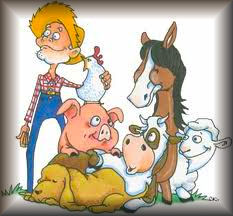 illustration from
illustration from  Five weeks passed and no reply. The officer was at the DECCW lecture I described above so I said hello and he apologised for not answering, explaining that he passed my email around to other officers for comment. Apparently they nixed the idea of rope overpasses for koalas claiming they didn't work. I pointed out that they do work for possums and other animals however. His comment "Ah but possums aren't a threatened species."
Five weeks passed and no reply. The officer was at the DECCW lecture I described above so I said hello and he apologised for not answering, explaining that he passed my email around to other officers for comment. Apparently they nixed the idea of rope overpasses for koalas claiming they didn't work. I pointed out that they do work for possums and other animals however. His comment "Ah but possums aren't a threatened species."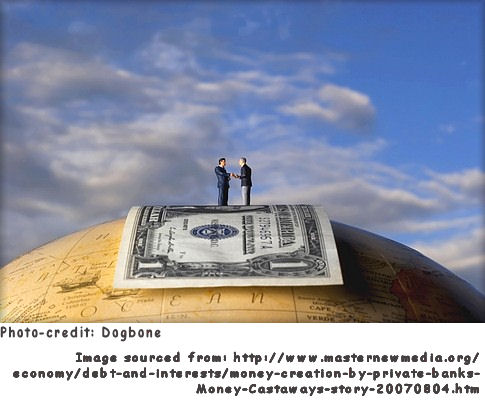

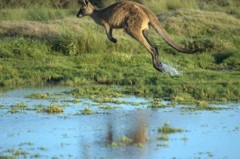


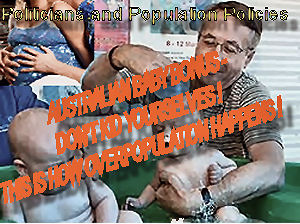

 Although the standing committee's refusal to endorse Hume LHPA's proposal will no doubt be a blow to the pest authority's submission to the Department of Environment, it is still possible that it will be approved and commercial culling will become a reality in the district.
Although the standing committee's refusal to endorse Hume LHPA's proposal will no doubt be a blow to the pest authority's submission to the Department of Environment, it is still possible that it will be approved and commercial culling will become a reality in the district.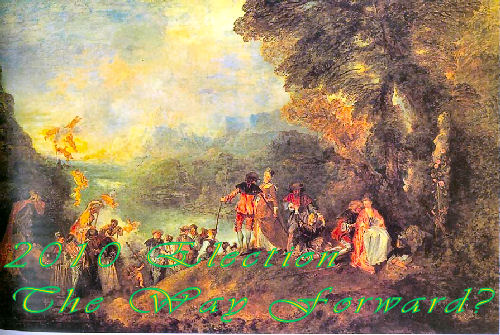
 After a lacklustre campaign where we were forced to watch two flies crawl up a wall (one with red hair and one in Speedos) ... the electorate has signalled that it is sick of the two major parties and the stale offerings they pedal. The newly elected Independents Mr. Andrew Wilkie and Greens MP Adam Bandt ... have been handed a mandate for change, which goes far beyond merely delivering stable government. Indeed, it is "stable" government and its business as usual approach over many years which has entrenched many of the problems we now face as a nation. The independent presence can serve as the stimulant which keeps parliament from slipping again into the stifling dominant paradigm.
After a lacklustre campaign where we were forced to watch two flies crawl up a wall (one with red hair and one in Speedos) ... the electorate has signalled that it is sick of the two major parties and the stale offerings they pedal. The newly elected Independents Mr. Andrew Wilkie and Greens MP Adam Bandt ... have been handed a mandate for change, which goes far beyond merely delivering stable government. Indeed, it is "stable" government and its business as usual approach over many years which has entrenched many of the problems we now face as a nation. The independent presence can serve as the stimulant which keeps parliament from slipping again into the stifling dominant paradigm.


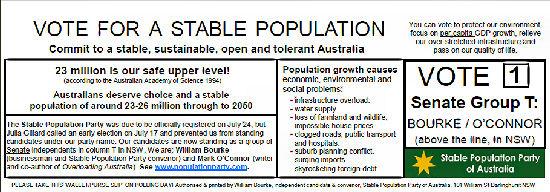
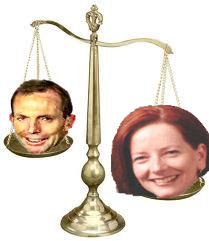
 Today, on Geraldine Doogue's "Saturday Extra" (ABC radio national), the wrong impression was given by a British-accented commentator that the GST had been brought in in Australian in a fair and reasonable manner. This is infamously untrue and misleading on election day. Wide-eyed talk of how people oddly resent 'change' ignores the fact that change initiated by the people is resisted adamantly by the press and the politicians.
Today, on Geraldine Doogue's "Saturday Extra" (ABC radio national), the wrong impression was given by a British-accented commentator that the GST had been brought in in Australian in a fair and reasonable manner. This is infamously untrue and misleading on election day. Wide-eyed talk of how people oddly resent 'change' ignores the fact that change initiated by the people is resisted adamantly by the press and the politicians.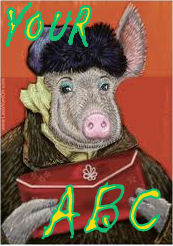


 "The growth lobbyists will tell us that we can solve our problems by converting to “clean coal” technologies or nuclear power, building more high rise, producing desalinated water at $10 litre (who knows?), installing “smart” electricity meters, piping water from the Northern Victoria to Melbourne, importing more food on more and bigger ships etc." Federal Candidate, Jenny Warfe writes, "I'm looking forward to a different way of 'moving forward.'"
"The growth lobbyists will tell us that we can solve our problems by converting to “clean coal” technologies or nuclear power, building more high rise, producing desalinated water at $10 litre (who knows?), installing “smart” electricity meters, piping water from the Northern Victoria to Melbourne, importing more food on more and bigger ships etc." Federal Candidate, Jenny Warfe writes, "I'm looking forward to a different way of 'moving forward.'"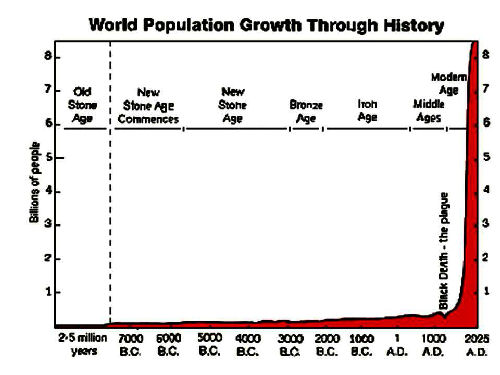
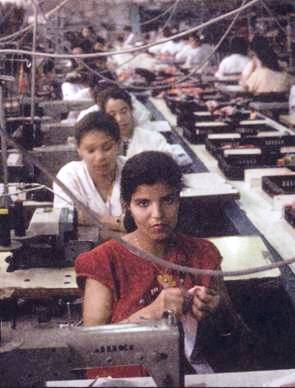


 Quark writes about how the mainstream press is becoming increasingly hysterical in its promotion of growth lobby propaganda, particularly since the Australian Federal election in August 2010.
Quark writes about how the mainstream press is becoming increasingly hysterical in its promotion of growth lobby propaganda, particularly since the Australian Federal election in August 2010. Population sociologist Sheila Newman's talk, "Stable Population dynamic demystified," presented fascinating original material using social and biological research showing how most animals, including humans, can maintain steady state populations in different environments and conditions. Whilst showing how small populations can be maintained, it failed to bear out Hobbs' dismal prognostications.
Population sociologist Sheila Newman's talk, "Stable Population dynamic demystified," presented fascinating original material using social and biological research showing how most animals, including humans, can maintain steady state populations in different environments and conditions. Whilst showing how small populations can be maintained, it failed to bear out Hobbs' dismal prognostications.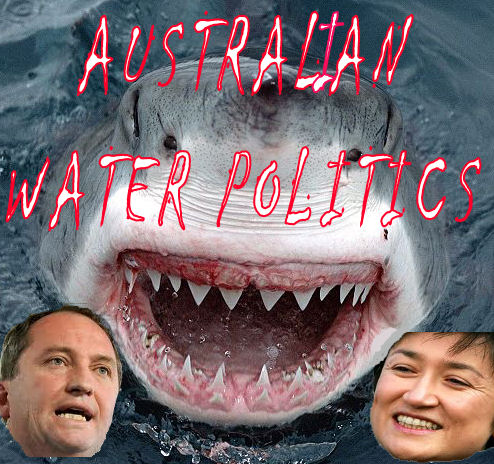 Without obtaining the prior mandate of the electorate, successive Australian governments have been seeking to establish a water-market in this country. For as long as the people of Australia are required to “buy-back” the nation’s water, especially during times of crisis, they will have no water security. Bidding-wars, as currently being waged by Senators Wong and Joyce, are now an unattractive and dangerous feature of Australian water policy: profits arising will be privatised but the impacts will be borne by the Australian public. The electorate of this country must be given the opportunity to indicate whether it wishes its water to be privatised and exposed to global speculation - or protected for future generations of Australians.
Without obtaining the prior mandate of the electorate, successive Australian governments have been seeking to establish a water-market in this country. For as long as the people of Australia are required to “buy-back” the nation’s water, especially during times of crisis, they will have no water security. Bidding-wars, as currently being waged by Senators Wong and Joyce, are now an unattractive and dangerous feature of Australian water policy: profits arising will be privatised but the impacts will be borne by the Australian public. The electorate of this country must be given the opportunity to indicate whether it wishes its water to be privatised and exposed to global speculation - or protected for future generations of Australians.
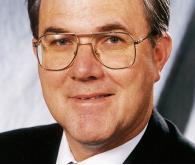
.jpg)
.jpg)

Recent comments